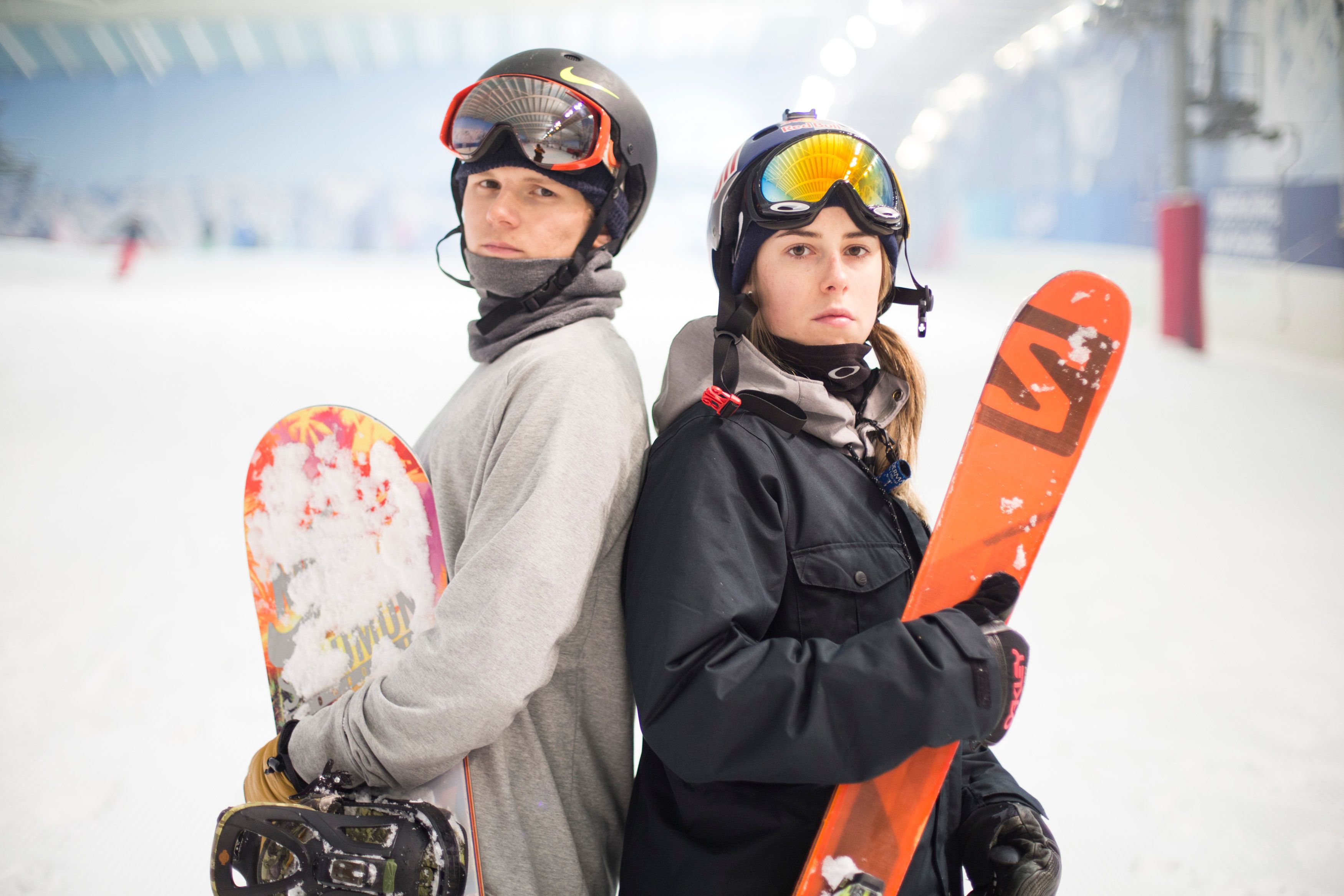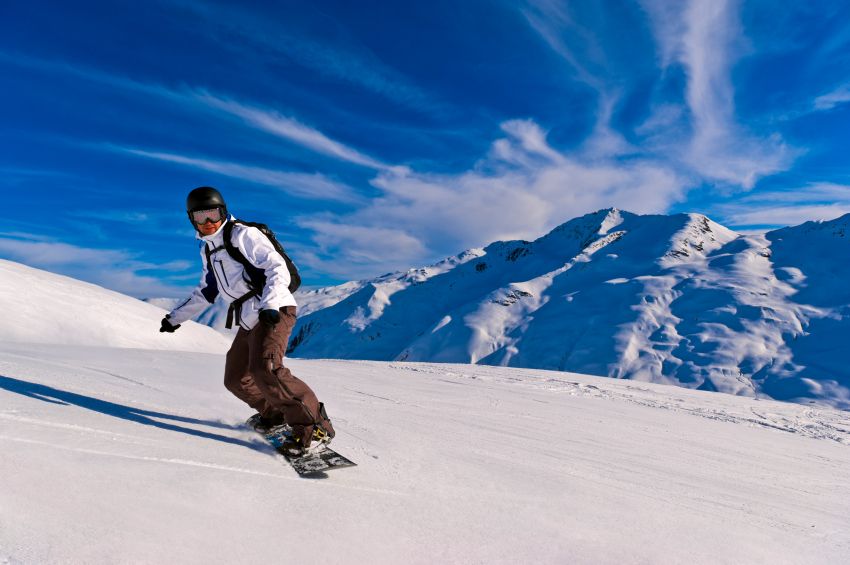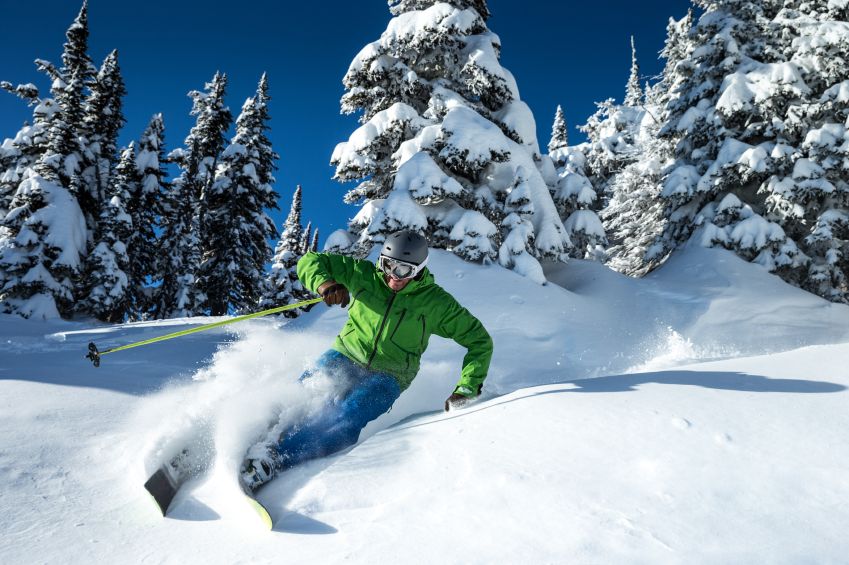Where winter sports are concerned there’s only two major games in town – snowboarding or skiing.
Anyone with a board will tell you snowboarding is the coolest thing on snow, while skiiers will argue that two is better than one.
But cool and cachet apart, we want to know which sport rules in pure strength, fitness and performance terms.
Team GB Snowboarder Jamie Nicholls claims snowboarders are fitter than skiiers in this Neilson video comparing the two sports.
But Katie Summerhayes, Team GB freestyle skier and Suzuki Nine Queens, said: “I think skiiers are fitter because we’ve got to spend all our time squatting. There’s so many different elements you can do – jumping, racing, moguls, ski cross.”
There was only one way to decide for sure – a straight up fight between the two.
Which burns the most calories? Which gives you the stronger legs muscles and which will carve your core so you look like a snow-conquering Schwarzenegger.
Winter sports expert Paul Deadman puts them head to head…
The Core
Skiers primarily need strong core muscles. Personal trainers will often focus on the transverse abdominal muscles (TVA) as the most important part of your core strength and these muscles are key in helping you stabilise your spine and pelvis.
Skiers who aren’t very strong in these muscles can easily be spotted on the slope due to their flailing arms and frequent stacks.
Snowboarding is an asymmetrical sport with riders placing one leg in front of the other when they mount the board. With legs facing one way, and heads turned to look down the mountain, it’s crucial for snowboarders to have strong rotational control of their trunk.
The lower torso is where most imbalances occur as the lower abs are not really used and this can result in lower back problems. Boarders can avoid this by keeping their pelvis tilted forward and core muscles actively engaged.
Skiing: 1 Snowboarding: 0
The Legs
Skiing relies heavily on the lateral muscles of your lower leg as they are used every time you put your skis on their edges.
Hamstrings are also pivotal in skiing as they are in charge of how your knees bend. Extending and flexing your leg helps you absorb impact and your hamstrings play an important part in protecting your knee ligaments, making sure they don’t snap under pressure.
Dorsiflexion, where your toes curl up toward your shins, is more common in skiing as it keeps your shins pressed into the tongue of your ski boot.
Snowboarders don’t use their quadriceps and hamstrings to control movement, but the lower down you can hold yourself, the better your balance will be on the slopes.
Much of a boarder’s control and direction comes from the feet and ankles working to make cuts and turns. Calves are consequently an important muscle for boarders as they control the ankle and they become very strong in advanced boarders.
Skiing: 2 Snowboarding: 0
Downhill
If you’re a confident skier or snowboarder and aren’t prone to falling over, getting from the top to the bottom should only require you to engage your balancing muscles. The metabolic rating of both downhill boarding and skiing is classed as ‘light to moderate effort’ as your body works quite efficiently when your alignment is correct, and burns between 293 to 361 calories an hour – whereas running is between 500 and 800 calories per hour.
Skiing: 2 Snowboarding: 0
Falling over
The more you fall over the more energy you need to pick yourself up. Of course everyone learns at a different pace, but in general, snowboarders fall over more when they’re learning.
This is something boarders should get used to though as they have to sit to strap on their board before every run and consequently have to lift themselves off the ground over and over again, a great workout for the abs and arm muscles and something skiers don’t need to do. So, perhaps for the wrong reasons, snowboarders can claim this as a fitness win.
Skiing: 2 Snowboarding: 1
The Flat
Snowboarders are more likely to unstrap and walk flat areas of piste, whereas skiers can cross ski, an excellent upper body cardiovascular exercise. This exercise is even more vigorous if you’re kind enough to let a stranded boarder hold on to your pole as you pull them along.
Skiing: 3 Snowboarding: 1
Off the snow
With similar techniques to skateboarding and surfing, snowboarders can hone their skills and muscle groups all year round through a variety of sports, whereas skiers have to rely on squat routines and strengthening exercises in the gym.
Skiing: 3 Snowboarding: 2
It’s close but with three points to two, skiing just takes it to be the fitness winner in the Ski vs Board debate. Is this the right decision? There will be those who argue snowboarding reigns supreme, but all you need to know is Justin Bieber snowboards. Enough said.













































